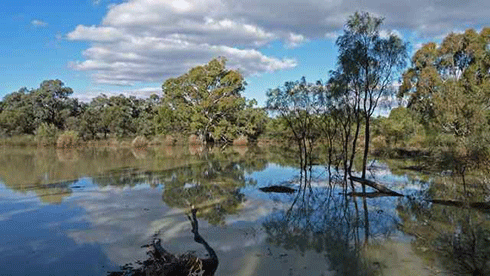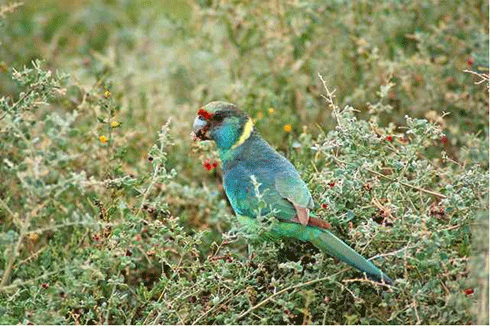
|
Published: 11 March 2014
Victoria Marles: How law can work for nature
For a week or so around International Women’s Day, women’s achievements take centre stage. Last week, ECOS interviewed Dr Helen Cleugh, a key contributor to the recent State of the Climate report. This week, we chat with Victoria Marles, lawyer and CEO of the Victoria-based Trust for Nature. The Trust, one of Australia’s oldest private conservation organisations, works with private landholders to protect biodiversity through conservation ‘covenants’ and other mechanisms.

|
|
Victoria Marles: “The law plays an important role in the tools we use for private land conservation.” Credit:
Trust for Nature
|
What is unique about the Trust for Nature’s work?
Roughly 40 per cent of Victoria is public land, of which 15 per cent is protected in national parks and reserves, leaving 60 per cent of our state in private ownership. Trust for Nature’s remit is to work with landowners to help protect the private land that has long-term conservation value through the use of covenants and other [legal] tools.
Private land is often the link between natural areas that are highly fragmented and its protection is therefore vitally important for the survival of many species.
What is a conservation covenant? What other mechanisms does the Trust use to conserve nature?
A conservation covenant is a voluntary and permanent legal agreement negotiated between Trust for Nature and an individual landowner, to ensure that the native vegetation on their property is protected forever. The covenant is placed on the property's title. There are currently more than 1200 covenants across Victoria protecting more than 50,000 hectares, and the Trust provides land management support to these landowners.
There are some situations where Trust for Nature acquires land and remains the owner and manager of that land, often in association with local volunteer committees of management. Currently we have 44 conservation reserves that we own and manage. A good example is Neds Corner Station , a 30,000 ha property in the north-east of Victoria on the Murray River. It is Victoria’s largest private conservation property.
We also have a revolving fund, a market-based tool through which properties of high conservation value are bought, protected with a conservation covenant and then sold back in the marketplace, most likely to a conservation-minded buyer. Proceeds from the sale go back into the fund to purchase future conservation properties to sell and protect.
You were Victoria’s Legal Services Commissioner and Deputy Telecommunications Ombudsman. How has your legal and consumer background helped in your current role?
I can now see that in modern-day conservation, the skills needed to be effective range from finance, legal and investment skills, through to communications. Conservation practices have hit the mainstream!
In the case of Trust for Nature, some of our key conservation tools are legal in nature. The conservation covenant is a legal agreement to protect conservation values of a property registered on title. The revolving fund involves the purchase and sale of land. Increasingly, market rules are being developed by government regulators to recognise the value of environmental services. The law plays an important role in the tools we use for private land conservation.
From a personal standpoint, my journey to this role was spurred along by the fact that in 2008, I became a joint owner of a property that had a conservation covenant on it. That really opened my eyes to the important role that individuals can play in looking after the land by being an owner of a covenanted property.
What factors does Trust for Nature consider when deciding whether or not to covenant land?
We covenant land of high conservation value. We ask questions such as: Does the land form part of an important wildlife corridor? Does it act as a buffer to a neighbouring state reserve or national park?
We consider the condition of native flora and fauna on property, the presence of rare and endangered species, the size and shape of an area, the degree of weed infestation and the management required to maintain the ecological integrity of the site.
We work strategically to achieve landscape-scale conservation. Last year, the Trust launched the first Statewide Conservation Plan for Private Land in Victoria. It identifies 12 focal landscapes across the state and a number of threatened plants and animals that we’ll focus on going forward. The 12 areas take into account the location of public protected land, so we’re connecting private areas to public areas, and doing it in a planned way.

|
|
Mallee wetlands revived by environmental watering at Neds Corner Station. Credit:
C Barnes/Trust for Nature
|
Are conditions on a covenant set in stone, or is there flexibility to adapt land management to changing circumstances?
In general, a standard covenant will prohibit removal of native vegetation, the introduction of non-indigenous vegetation, subdivision, grazing by livestock and so on. However, standard restrictions can be modified where the Trust is satisfied that conservation won’t be affected.
One example is that some covenants allow grazing, typically in grassy ecosystems like native grasslands and woodlands where it is well recognised by ecologists and land managers that controlling vegetation will improve species diversity in the ground layer. Regarding productive land, the Trust’s officers are aware of the importance of working with landowners to ensure that management of the covenanted land does not become an impediment to the management of the farm.
Could you talk about some of the key challenges facing the Trust for Nature?
The key challenges are to continue building awareness about the critically important role that private land has in achieving strategic, landscape-wide conservation, and to continue the development of innovative, private-land conservation approaches.
Working with partners is central to these challenges, so we are really pleased that Tamara Vrooman, CEO and President of Vancity, Canada’s largest community credit union, spoke at our International Women’s Day breakfast about the successes of Vancity’s partnerships with conservation bodies.




